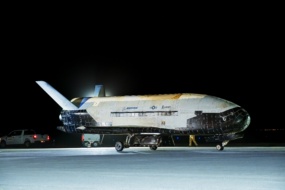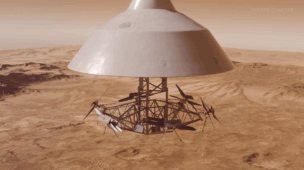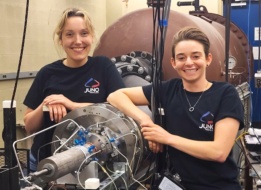KSAT will integrate its global network of satellite ground stations directly into Amazon Web Services (AWS), allowing commercial satellite operators to pull their data directly into the leading cloud computing provider.
“We are deploying edge nodes to our sites where we can enhance customer data delivery, streamline backhaul, [and] ensure low-latency pre-processing,” KSAT president Dan Adams told Payload.
Amazon and KSAT’s mutual customers “were doing two competing sets of architecture and data delivery, when absolute low latency requires that you only move the data once,” said retired USAF Maj. Gen. Clint Crosier, now the director of AWS aerospace and satellite solutions.
Now, he says, “They can just go into their AWS account, open up the file, and there’s the data.”
Spectrum matters: AWS operates a dozen ground stations optimized for LEO satellites using the X and S bands. It can expand its services by accessing other orbits served by KSAT, as well as its forthcoming Ka-band offering.
KSAT’s 40 sites around the world, and 24/7 customer service, also promise AWS users more flexibility for scheduling and trouble-shooting.
Sensors? Suite. EO businesses are really data providers. As sensors with higher spatial and spectrum resolution take to the skies, it takes more work to make the data useful. Plugging satellites directly into the gold-standard cloud network, which already counts companies like Maxar and Planet as users, seems like a natural step as the internet stretches into orbit.
“We think this becomes the de facto way customers are going to want to get integrated ground station and cloud capabilities,” Crosier, whose last job in uniform was standing up the US Space Force, said.
Alternatively: Other cloud giants are taking a different approach; Microsoft Azure, which launched a ground station services business in 2020, shuttered the network late last year. Google Cloud announced a partnership with SpaceX Starlink in 2021 (Google holds a SpaceX board seat, as a strategic investor in the company) that doesn’t appear to have been publicly discussed since.
Kuiper koming: Amazon’s Kuiper broadband network is now heading to space, and it’s easy to see the synergies between Kuiper and the company’s cloud business. Crosier wouldn’t talk about potential service partnerships, but did say Kuiper was building its mission management and operations on AWS cloud services.




